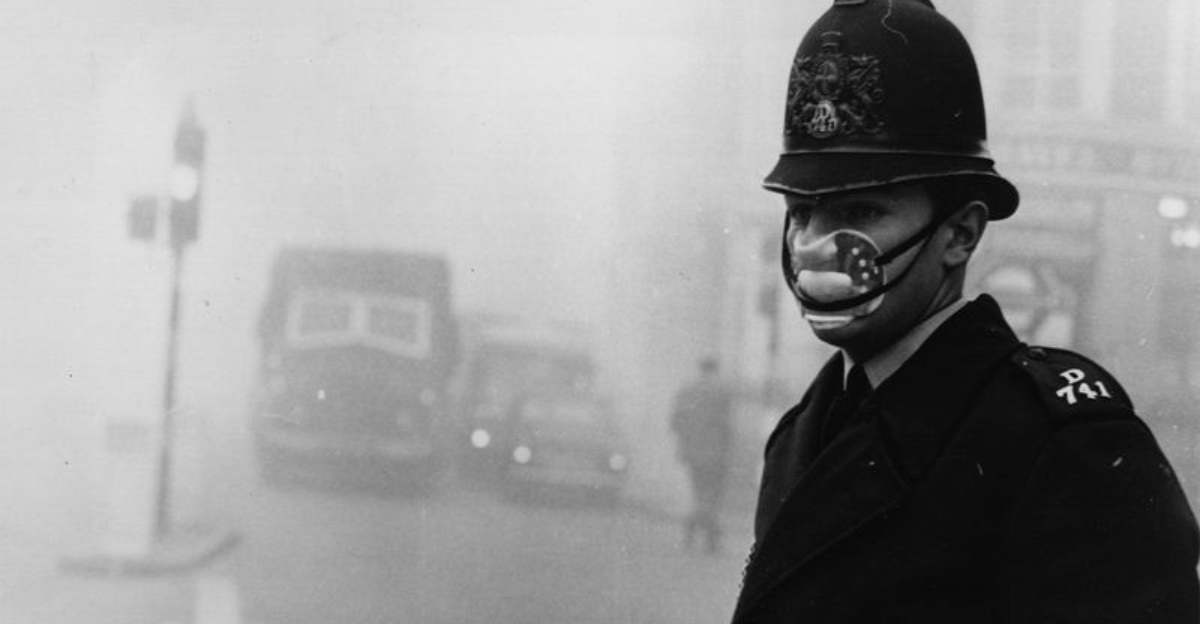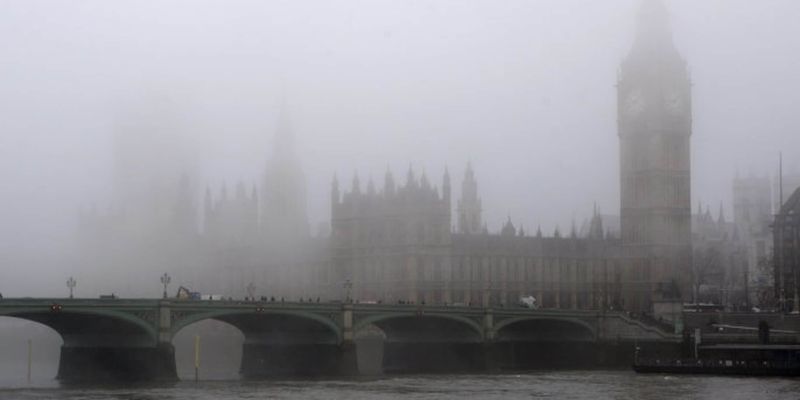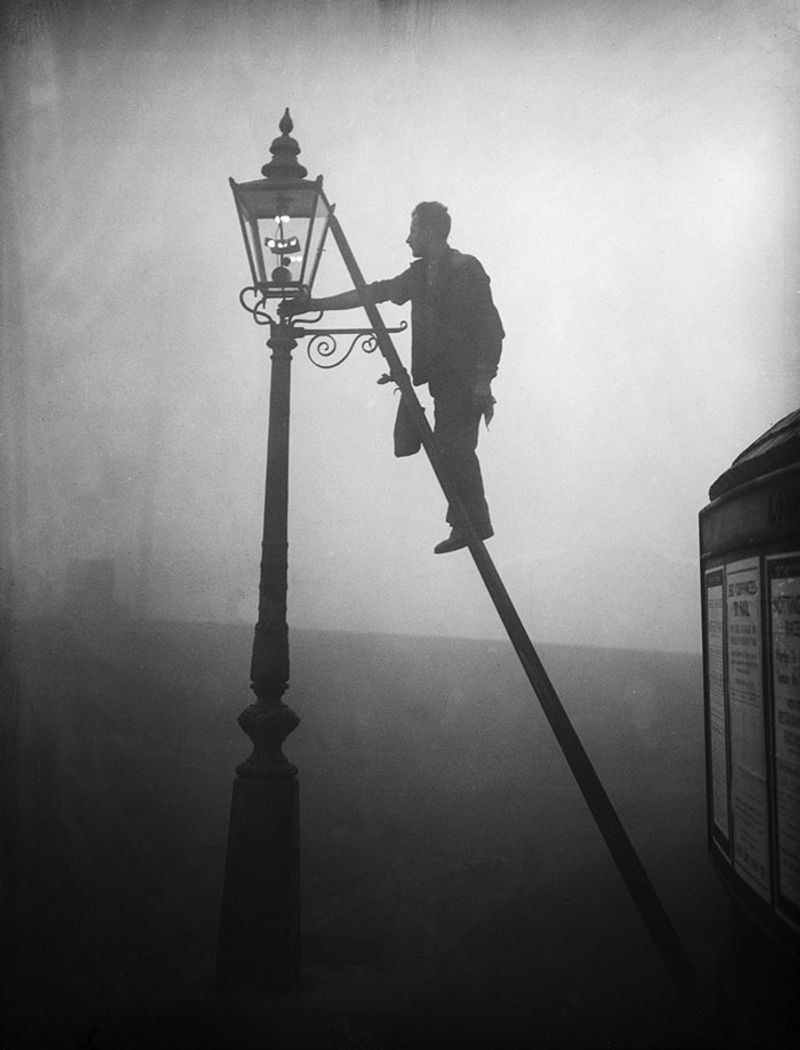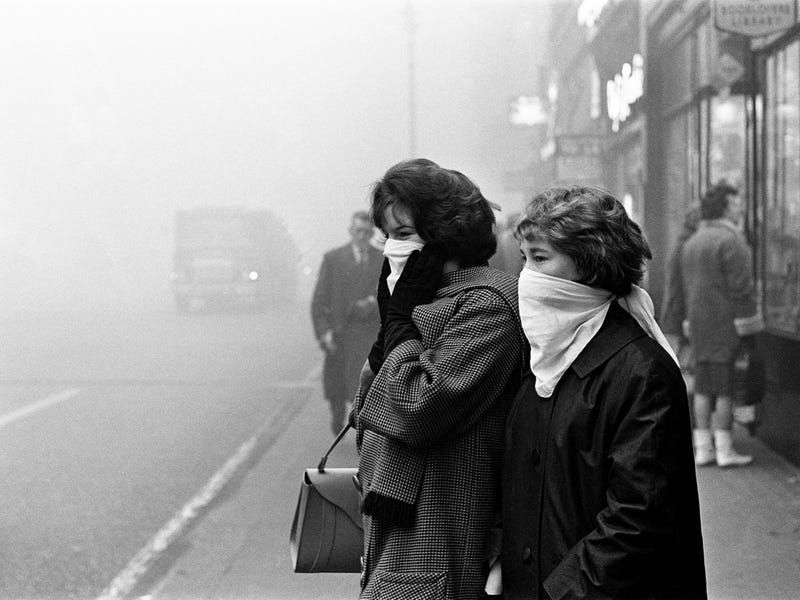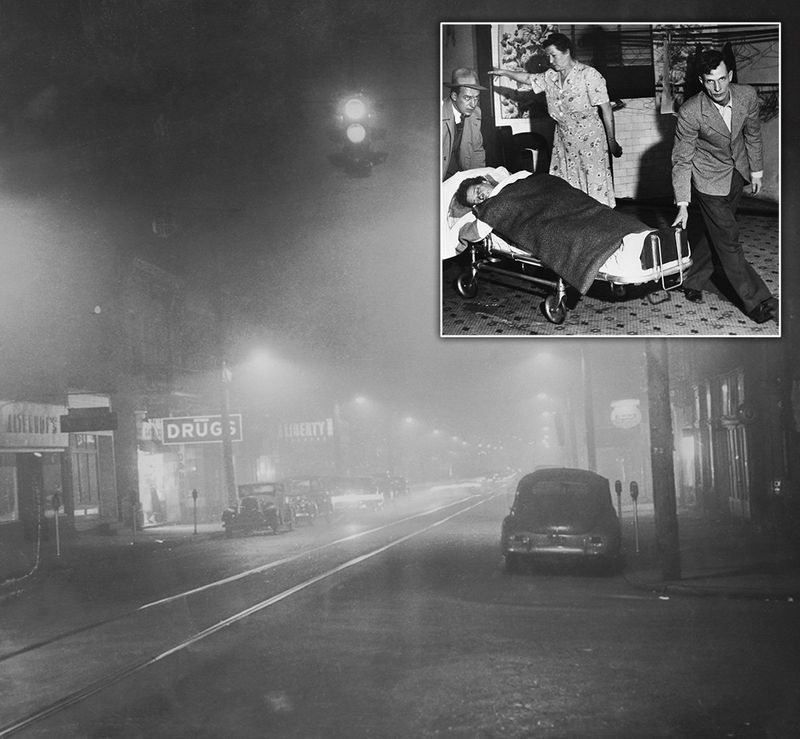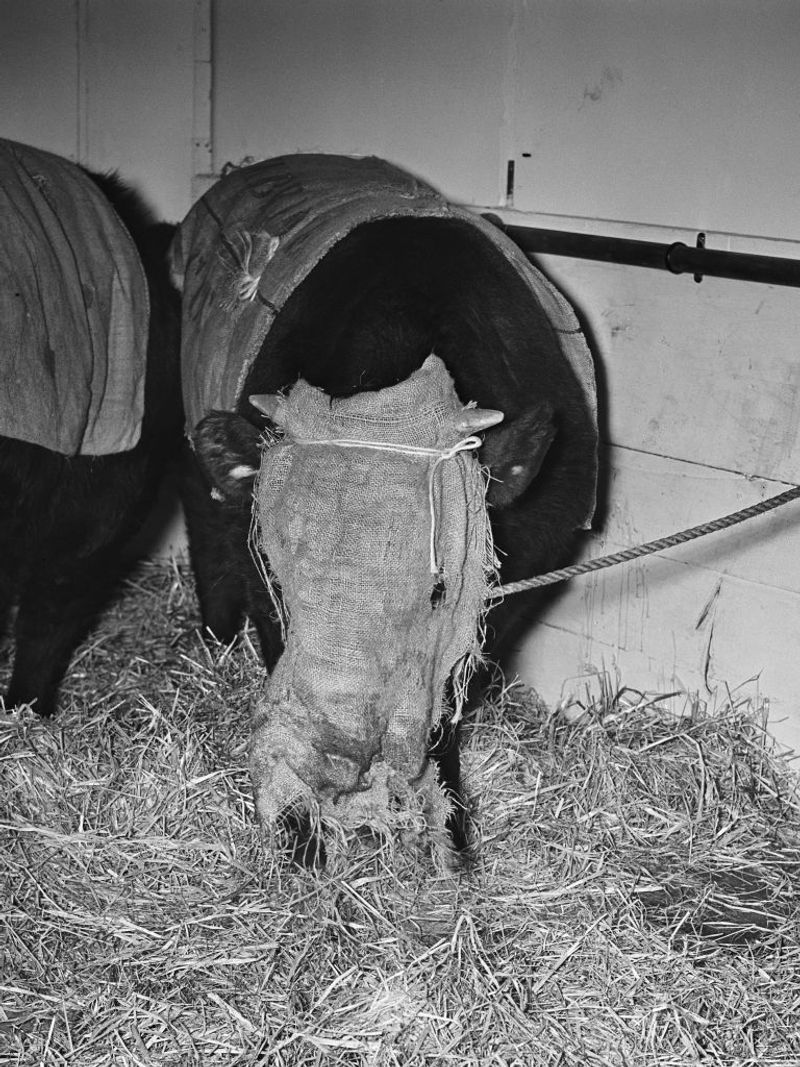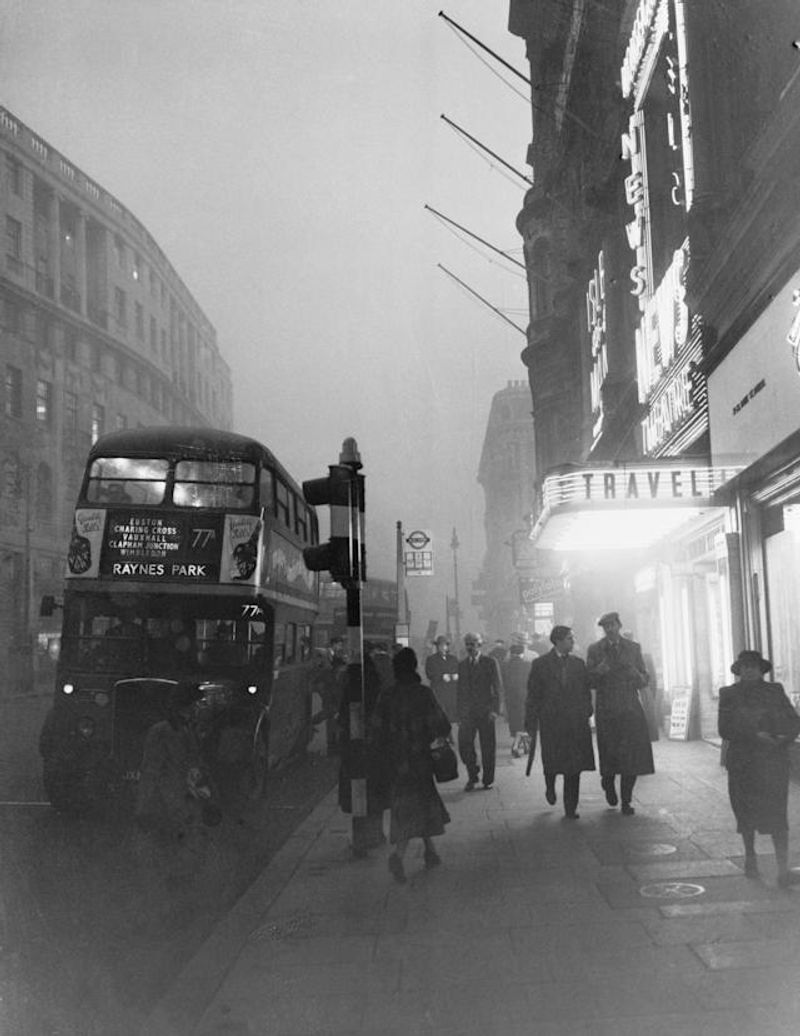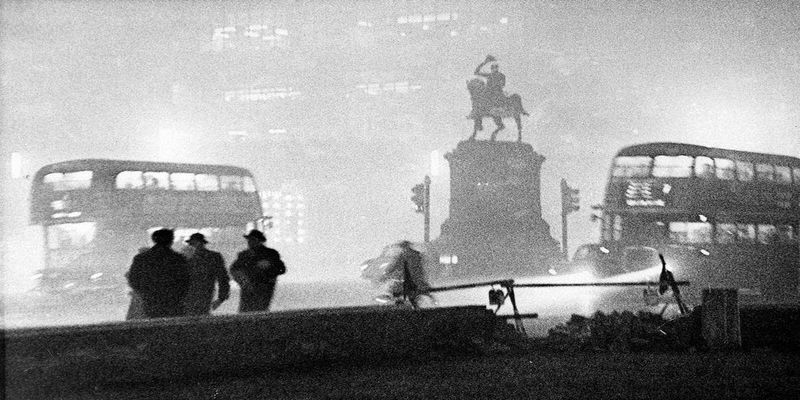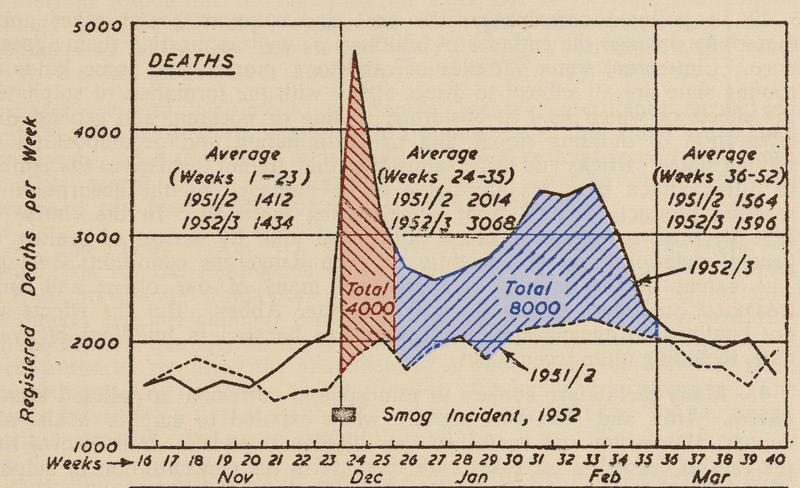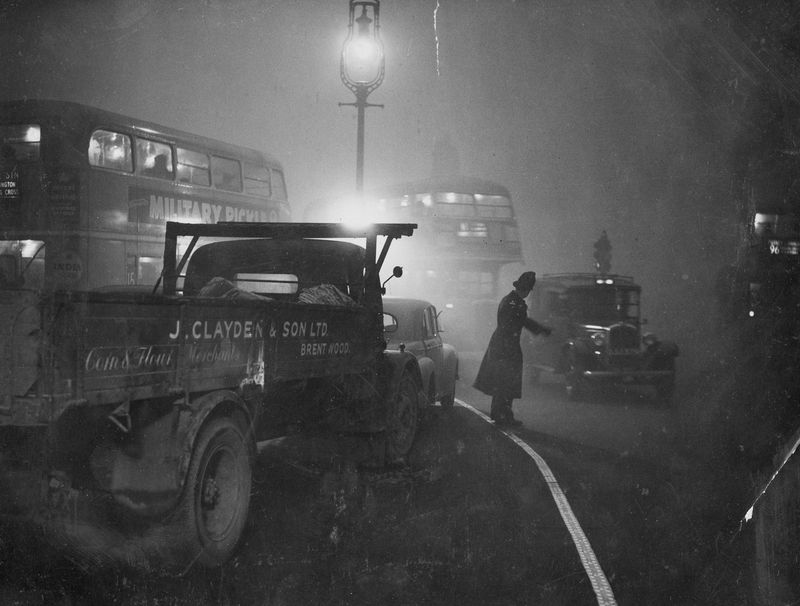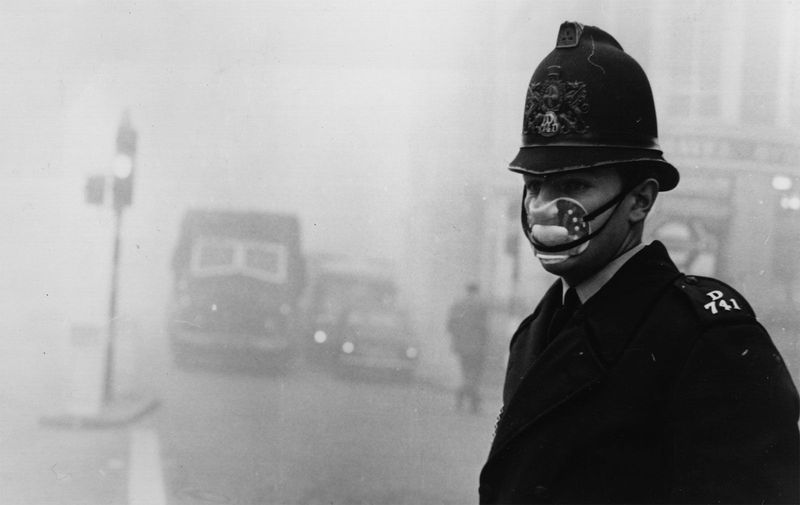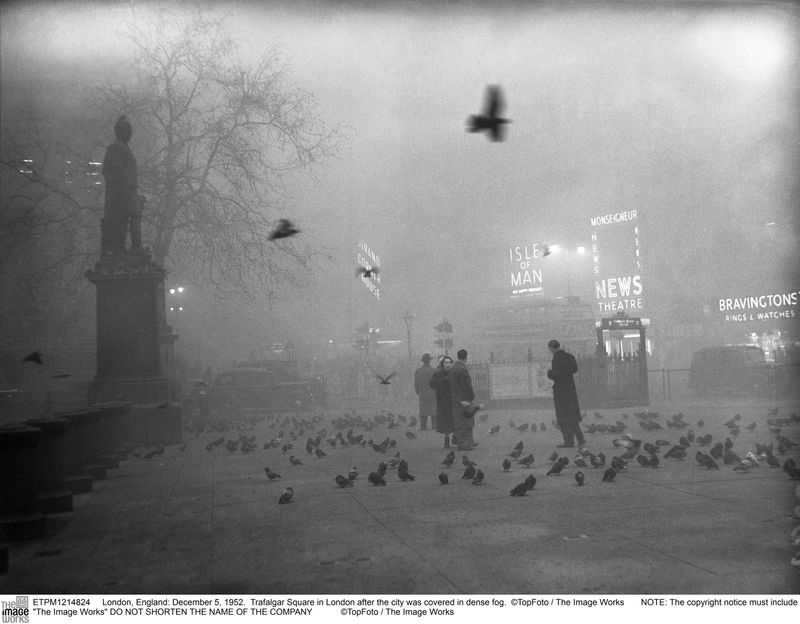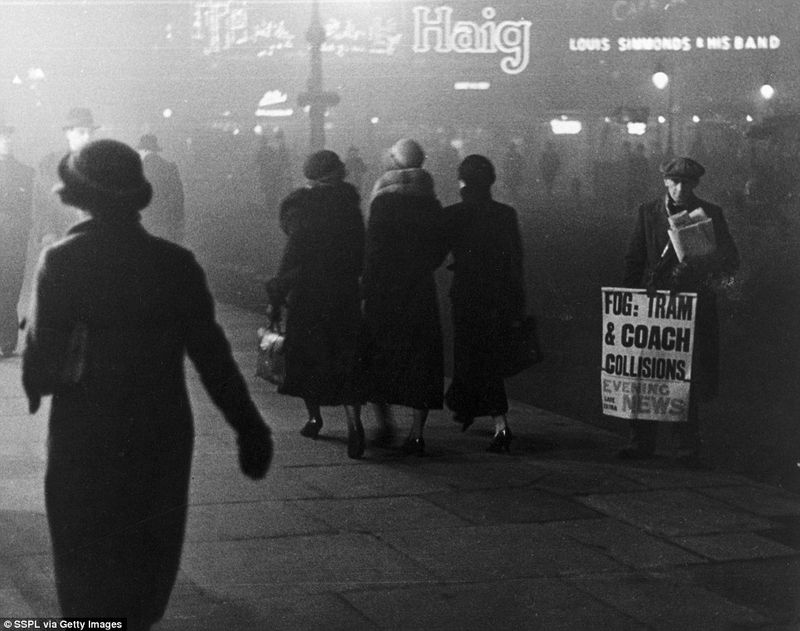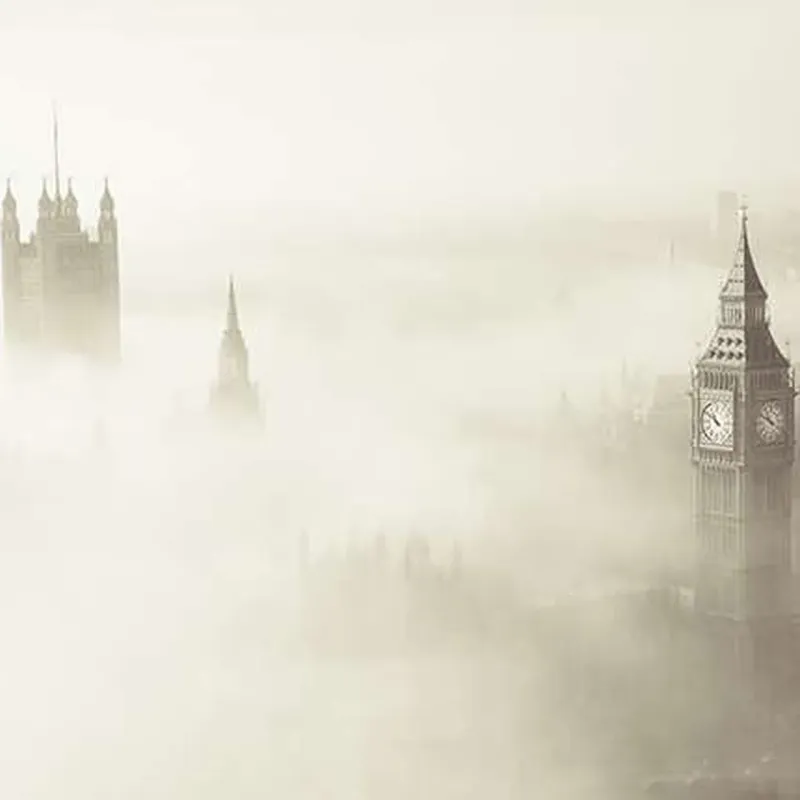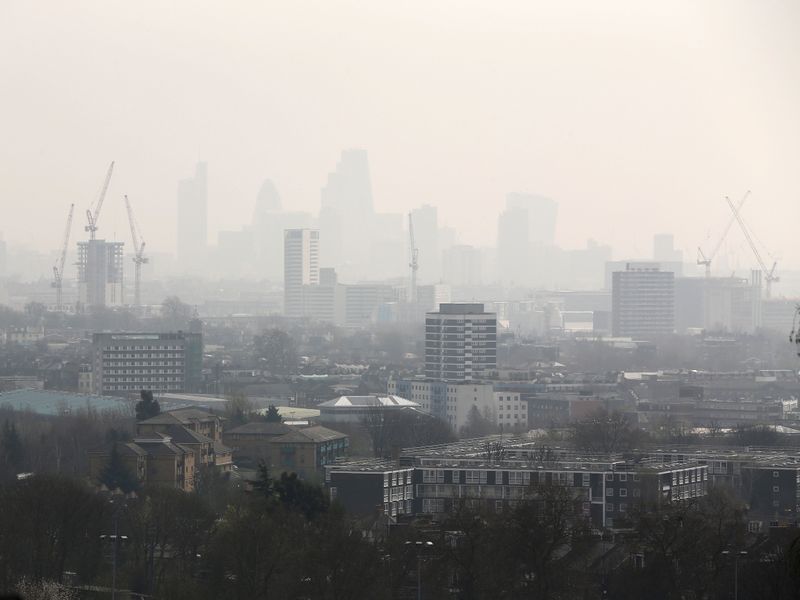In December 1952, a fog descended on London that would become one of history’s deadliest environmental disasters. For five days, a toxic combination of weather conditions and pollution created an almost impenetrable blanket of smog that choked the city. The disaster, now known as the Great Smog of London, claimed thousands of lives and forever changed how we think about air pollution and public health.
1. It Wasn’t Just Fog—It Was a Toxic Smog
Londoners initially thought they were experiencing typical winter fog, but something far more sinister had enveloped their city. Coal fires from millions of homes mixed with industrial emissions and diesel exhaust, creating a deadly cocktail.
Weather conditions played a cruel role too. A temperature inversion trapped the pollutants close to the ground, preventing them from dispersing. The result was a thick, yellow-black cloud of sulfuric acid droplets that burned lungs and poisoned the very air people needed to survive.
2. Visibility Dropped to Just 12 Inches
The density of the smog created apocalyptic conditions throughout London. People reported being unable to see their own hands extended in front of them. At its worst point, visibility plummeted to a mere foot in some areas.
Transportation ground to a halt as bus conductors had to walk ahead with lanterns, guiding drivers inch by inch. Londoners tied handkerchiefs to themselves so family members wouldn’t lose each other when venturing outdoors. Many became disoriented just steps from their homes, with some even drowning after accidentally walking into the Thames River.
3. The Smog Smelled Like Rotten Eggs
Beyond its terrifying appearance, the Great Smog assaulted Londoners’ senses with a putrid, sulfurous stench. The high concentration of sulfur dioxide created an overwhelming rotten egg smell that permeated everything – clothes, furniture, and even food.
People reported tasting metal in their mouths and feeling burning sensations in their throats and eyes. The acidic nature of the air corroded metal structures across the city. Even indoors, the smell was inescapable as the microscopic particles infiltrated buildings. Many described the experience as like breathing through a wet, sulfur-soaked cloth.
4. People Collapsed in the Streets
The scenes across London resembled a wartime crisis as residents struggled to breathe the poisonous air. The elderly and those with existing respiratory conditions were the first to succumb, often within hours of exposure. Horrified witnesses described seeing people suddenly gasping for air before collapsing on sidewalks.
Hospital staff reported patients turning blue from lack of oxygen. Emergency services were overwhelmed and largely immobilized by the smog itself. Citizens formed impromptu rescue teams, carrying victims on doors or planks when stretchers weren’t available. The most vulnerable victims – often children and the elderly – died where they fell when help couldn’t reach them in time.
5. Cattle Suffocated to Death at a Market
The Smithfield Market, London’s central meat market, became a gruesome scene of animal suffering. Prize cattle brought to the city for a livestock show began dropping dead in their pens, unable to process the toxic air through their larger respiratory systems.
Market workers arrived to find animals lying on their sides, mouths foaming from desperate attempts to breathe. Some cattle were found standing but dead – having suffocated while upright. The agricultural losses were substantial, but more importantly, these animal deaths served as a horrifying indicator of what was happening to human lungs throughout the city.
6. Theaters and Cinemas Shut Down Mid-Show
The entertainment industry faced unprecedented disruption as the smog infiltrated indoor spaces. At the prestigious Royal Opera House, performers couldn’t see the orchestra pit from the stage. Audience members reported being unable to see performers from just a few rows back.
Cinema projectionists found their film beams couldn’t penetrate the indoor haze. Some theaters attempted to continue by having ushers hold flashlights along aisles, but many simply refunded tickets and closed. The famous fog machines used in London’s theatrical productions were ironically unnecessary – the deadly real fog had upstaged them all.
7. Criminals Became Invisible
London’s criminal element quickly exploited the blinding conditions. Police whistles were rendered useless in the sound-dampening fog, and officers could barely see beyond arm’s length. Robberies increased dramatically, with victims unable to identify their attackers in the murk.
A particularly sinister trend emerged: criminals offering to “guide” lost pedestrians to safety, only to lead them into alleys for robbery. Scotland Yard reported an unprecedented spike in muggings and break-ins. The usual deterrent of potential witnesses was eliminated by the smog’s perfect concealment. Law enforcement was essentially paralyzed, creating a temporary lawless zone in one of the world’s most policed cities.
8. The Death Toll Was Horrifically Underestimated
When the fog finally lifted, authorities initially reported around 4,000 deaths – a shocking figure that was still dramatically short of reality. Medical researchers examining mortality data years later would discover the true scale of the catastrophe was much worse.
Modern analysis suggests between 12,000 and 13,000 people died from smog-related causes. The death rate remained elevated for months afterward as weakened survivors succumbed to respiratory damage. Perhaps most disturbing, government officials likely knew the death toll was higher but downplayed figures to avoid panic and political fallout. The full human cost included countless survivors left with permanent lung damage.
9. Undertakers Ran Out of Coffins
The sheer volume of deaths overwhelmed London’s funeral infrastructure. Morgues filled beyond capacity, forcing hospitals to store bodies in makeshift spaces. Funeral homes worked around the clock but couldn’t keep pace with the mounting casualties.
The coffin shortage became so severe that emergency shipments had to be brought in from other parts of England. Grieving families waited in long queues outside funeral parlors. Some bodies remained unburied for weeks. Mass graves were considered but ultimately avoided. The backlog created additional psychological trauma for families already devastated by sudden losses, as they couldn’t properly lay their loved ones to rest.
10. The Smog Killed More Than the Black Plague
The Great Smog earned a grim distinction in London’s long history of disasters. In just five days, it claimed more lives than the infamous Great Plague of 1665 took in its worst week. This modern catastrophe unfolded without a single bomb or visible enemy.
Unlike war or disease outbreaks that triggered immediate government response, the smog’s silent killing mechanism initially escaped recognition. The death certificates typically listed bronchitis, pneumonia, or heart failure rather than pollution as the cause. This statistical masking delayed understanding of air pollution’s deadly potential. Only when mortality statistics were later analyzed did the true magnitude emerge – revealing it as one of Britain’s deadliest peacetime disasters.
11. Birds Dropped Dead Mid-Flight
Londoners witnessed eerie scenes of birds suddenly falling from the sky throughout the city. The toxic air affected avian respiratory systems even more quickly than human ones. Pigeons, sparrows, and other urban birds would take flight only to succumb minutes later.
Street cleaners reported sweeping up thousands of dead birds from sidewalks and roads. The Thames River became littered with floating carcasses of waterfowl. Zoo officials worked desperately to protect valuable exotic birds by creating makeshift air filtration systems. This mass bird die-off served as a haunting ecological warning – canaries in the coal mine that foretold the human suffering to come.
12. People Mistook It for the End of the World
The apocalyptic conditions triggered genuine fear that something catastrophic beyond fog had occurred. Coming just seven years after WWII and during Cold War tensions, many Londoners initially believed they were experiencing a chemical weapons attack or nuclear fallout.
Religious leaders reported packed churches as people sought spiritual comfort. Some elderly residents recalled the gas attacks of WWI and feared history was repeating. Doomsday prophets appeared on street corners, declaring the smog divine punishment. The government’s initial silence on the crisis only fueled conspiracy theories. The psychological impact – mass anxiety and panic – created a secondary public health crisis alongside the respiratory one.
13. It Led to the Clean Air Act of 1956
From this tragedy emerged the first serious environmental legislation in British history. Public outrage forced Parliament to confront decades of industrial pollution that had been accepted as the price of progress. The resulting Clean Air Act of 1956 revolutionized urban living.
The law established smoke-free zones in cities and subsidized homeowners switching from coal to cleaner heating options. It mandated relocating power stations away from population centers and required tall chimneys on industrial buildings. Though initially resisted by industry, the Act became a template for environmental legislation worldwide. This single weather event fundamentally changed humanity’s relationship with its environment, launching the modern concept of air quality regulation.
14. The Smog Still Haunts London
The Great Smog’s legacy extends far beyond those five December days. Medical studies tracking exposed populations discovered alarming multi-generational impacts. Children in utero during the smog developed higher rates of asthma and reduced lung capacity that persisted throughout their lives.
Researchers found genetic alterations in exposed populations that affected their descendants. London’s architecture still bears chemical scarring on older buildings. The psychological trauma created a generation of environmental activists. Though modern London enjoys vastly improved air quality, pollution monitors still occasionally detect dangerous levels in certain areas. The city’s current Ultra Low Emission Zone represents the continuing battle against the invisible killer first recognized in 1952.
